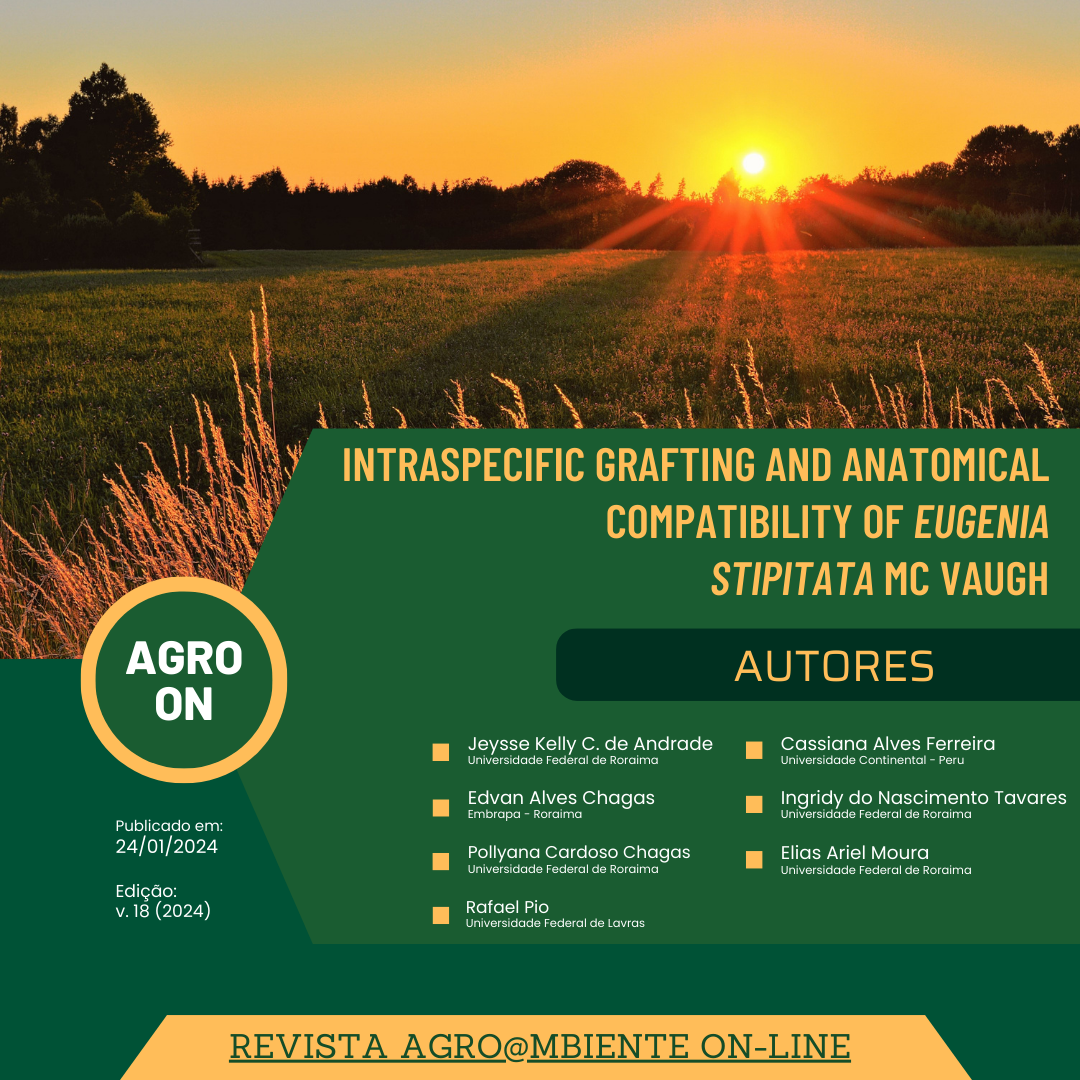Intraspecific grafting and anatomical compatibility of Eugenia stipitata Mc Vaugh
DOI:
https://doi.org/10.18227/1982-8470ragro.v18i00.7821Palabras clave:
Anatomical analysis. Grafting. Eugenia stipitata. Vegetative propagation.Resumen
The E. stipitata is a native fruit tree from the Amazon, currently in the domestication phase due to its high nutritional and economic potential. In this process, studies aiming at the technical feasibility of propagating materials with desirable agronomic qualities are necessary but still incipient. Thus, the objective of this study was to evaluate different grafting methods forE. stipitata propagation and the compatibility between scion and rootstock using anatomical analysis as a tool. For the experiment, a randomized block design was used in a split-plot scheme over time, with three replications. The plots consisted of three grafting types: cleft grafting, side-veneer grafting, and budding. The subplots were four evaluation times: 30, 60, 90, and 120 days after grafting (DAG). The evaluated variables were the grafting success rate, the number of shoots per graft, shoot length, and shoot diameter. There was a significant interaction between the factors under study. During the experimental period, an increasing grafting success rate and the number of shoots emitted were observed for budding, although with a low success rate. Through cleft grafting, there was a complete loss of shoots at 120 DAG, leading to the subsequent death of all tissues. Budding grafting appears as a promising method for E. stipitata propagation, demonstrating vascular tissue connection feasibility, although this effect did not reflect in the grafting success rate.

Descargas
Publicado
Número
Sección
Licencia
Derechos de autor 2024 REVISTA AGRO@MBIENTE ON-LINE

Esta obra está bajo una licencia internacional Creative Commons Atribución-NoComercial-SinDerivadas 4.0.
Declaro por mi nombre y en nombre de los otros autores que represento el acto de presentación de este artículo, la Revista Agro@mbiente On-line que: • 1. El contenido del artículo es el resultado de los datos originales y no publicados o presentados a otras revistas. • 2. Además del autor principal, todos los co-autores participaron en el trabajo lo suficiente como para hacer pública su responsabilidad por el contenido. • 3. En caso de aceptación del artículo, los autores coinciden en que los derechos de autor relativos a ellos pasará a ser propiedad exclusiva de la Revista Agro@mbiente On-line, prohibida cualquier reproducción, total o parcial en cualquier forma o medio de difusión, impresa o electrónica, sin la autorización previa y necesaria solicitada y, si obtenida, debe aparecer gracias a Lo periodico Agro@mbiente On-line.

